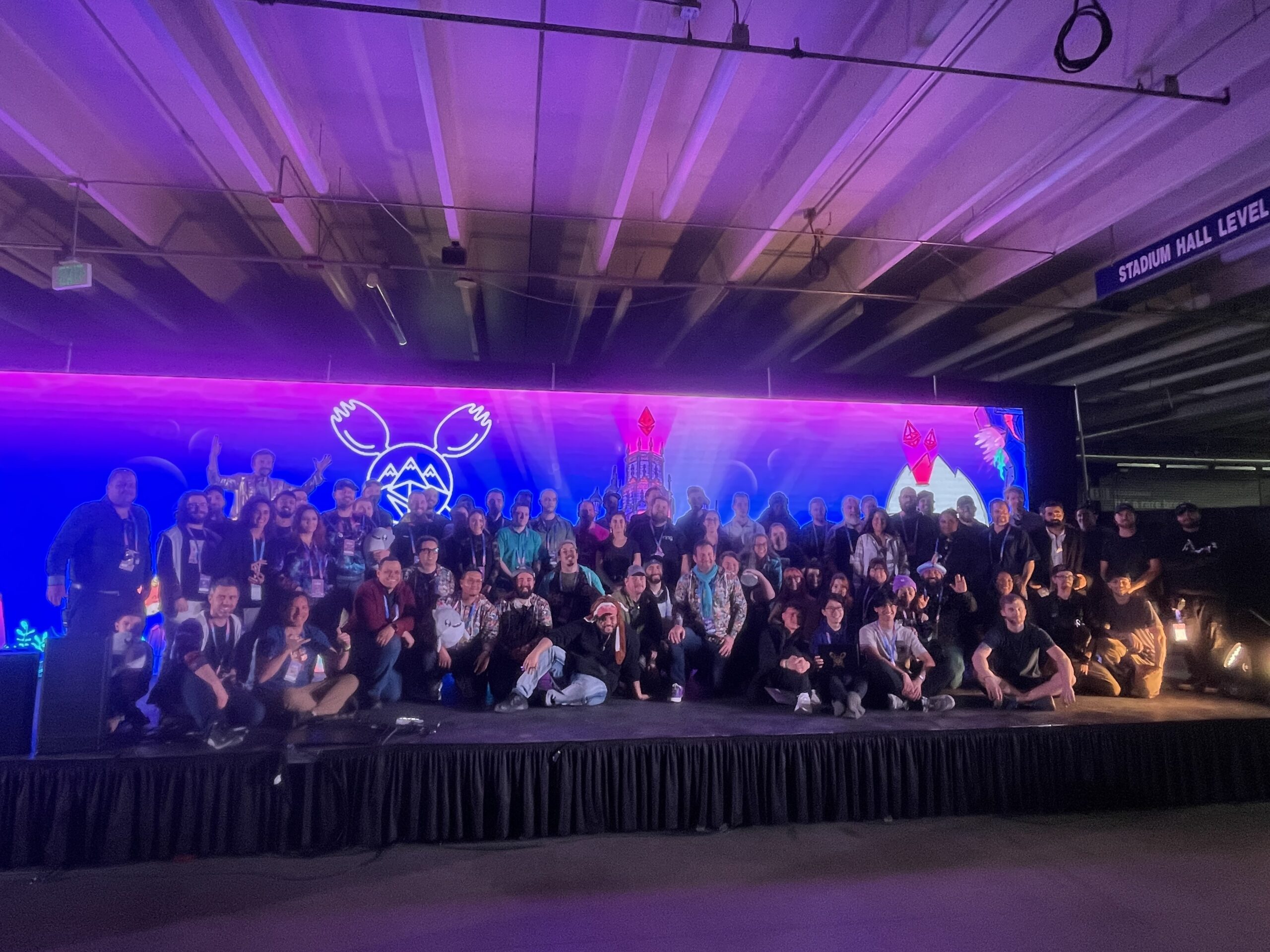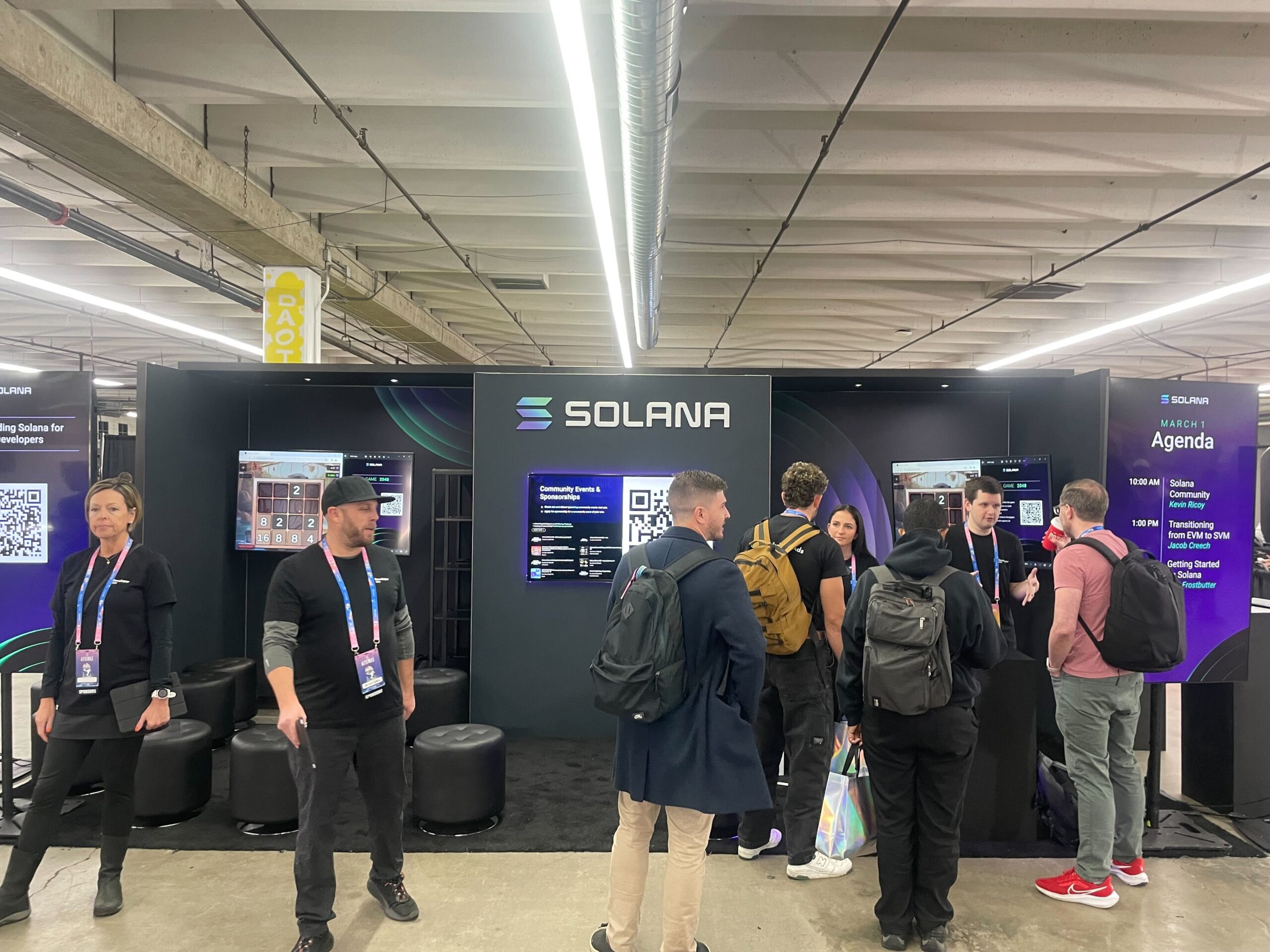
Posted March 5, 2024 at 6:10 pm EST.
As the seventh annual ETHDenver drew to a close on Sunday, reflecting on who came and presented offers a hint at the future of Ethereum and crypto generally. The festival announced it had more than 20,000 attendees this year, a more than 33% increase from last year’s 15,000 unique visitors. Among them were founders and developers of layer 2 and non-Ethereum projects as well as members of the U.S. government and a presidential candidate.
Looking at the attendees and presenters of ETHDenver 2024, here are three takeaways about the future of Ethereum and crypto in general.
Read more: ETHDenver’s 2024 Hackathon: Onchain Security, AI, and Gaming Fun Dominate the Winning Projects
Takeaway #1: Horizontal May Be the Answer to Ethereum’s Scalability Problem
Ethereum has long had a scalability problem. When the number of transactions and users increases substantially on Ethereum, the blockchain network suffers in performance, marked by high levels of gas fees. Layer two (L2) rollups, which have been endorsed by the blockchain’s co-founder Vitalik Buterin since Oct. 2020, are seen as the answer to the scalability problem.
The number of L2s has substantially grown in the past couple of years as data analytics website L2Beat shows that there are 44 L2 projects currently.
Despite the proliferation of scalability solutions in the form of L2s, “we are starting to see a lot of limitations on the performance of L2… notably recently with Inscriptions,” Kenny Li, co-founder of L2 Manta, said to Unchained in an interview. For example, Arbitrum suffered an outage in Dec. 2023 because of a surge in inscriptions.
Li said, “The scalability problem is not solved at all, especially when we’ve talked about these killer apps, these 1 billion users… Most of these L2s are not going to be able to sustain 1 million active users, and so now the question is: what do we do next?”
While L2’s offer faster and cheaper transactions than the base layer of Ethereum, they suffer from fragmentation. An application on one L2 can’t efficiently communicate with the version of itself on a different chain, can’t share liquidity, nor access the same user base, according to Li.
Polygon co-founder Brendan Farmer noted a similar observation. “If we think about the current state of crypto, we’re limited by infrastructure, and so we believe that in order to capture latent demand that we think exists, we need to remove the scaling limitations.”
For both Manta’s Li and Polygon’s Farmer, how the crypto space progresses forward with widespread adoption is through “horizontal scalability.”
“We’re at a point now where we can solve it, [scalability], in the sense of it’s not going to be through one singular L2, or L3 even. It’s going to be through horizontal scalability,” Li indicated. “Instead of just having the [transactions per second] of one L2, you can take advantage of the TPS of all the different L2s that are existing today that way applications when they need to scale their user base, they can look across all these L2s and say, ‘Okay this one’s got the TPS I need currently and start running compute through that… I think that’s very akin to a very tried and true model, which is cloud computing.”
Removing limitations on infrastructure, according to Farmer, is the ability to scale horizontally through Polygon’s aggregation layer. “The way we think about the agg layer is, it’s this piece of shared infrastructure that provides unified liquidity and composability and a user base that’s accessible to any chain and there’s no requirement to join the agg layer.”
The focus of horizontal scalability has provided a sense of optimism for Farmer. “This is the first time where it’s felt like there are real solutions to infrastructure problems that have been facing us for a long time. We can see in the distance the way to build an internet scale crypto ecosystem that is not limited by a lot of the infrastructure bottlenecks that we faced in the past,” Farmer said.
Takeaway #2: Ecosystems Merging
ETHDenver, as its name suggests, has historically been the home of Ethereum enthusiasts, contributors, and developers, and yet the annual community gathering has attracted individuals and communities from other blockchain networks, notably Solana and Bitcoin, demonstrating the growing overlap between the various sub ecosystems within the crypto space.

One of the talks on the mainstage was about how projects such as Eclipse, Neon, Monad, and Polygon were merging Solana and Ethereum together. One of the speakers, Polygon advisor Ajit Tripathi, had praised both Ethereum’s culture of research and Solana’s product first, engineering culture, saying “these two things need to come together.”
Sukanya Parashar, senior integration engineer for Neon EVM, which is based on Solana, said on stage, “We wanted something to build for the Ethereum community so that they easily can deploy their existing apps on Solana and get Solana’s benefits of high transaction speed, low gas fees and of course parallel execution.”
Cosmos, another blockchain network, is also seeing an overlap with the Ethereum community. “We’re headed towards an industry where the Cosmos and Ethereum ecosystem are slowly converging… For example, there are rollups on Ethereum right now that are secured by Celestia DA,” said Avril Dutheil, a core contributor of Cosmos-based chain Neutron, in an interview with Unchained.
Celestia, as a standard Cosmos-SDK based blockchain that is known for its data availability services, is “an example of Cosmos actually securing Ethereum,” Dutheil added.
Similarly to those in the Solana and Cosmos ecosystem, Bitcoiners are learning from the experiments happening on Ethereum. In fact, “there’s an amazing opportunity to learn from everything that has already happened in Ethereum,” Muneeb Ali, the co-creator of layer 2 Bitcoin network Stacks, said in a talk called, “Have Fun Staking Turing Incomplete: What Bitcoin Builders Borrowed From Ethereum.”
David Tse, co-founder of BabylonChain and professor at Stanford University, said in the same talk that 1,200 people showed up to a Bitcoin event at ETHDenver, highlighting the synergy between Bitcoiners and Ethereum contributors.
“The event was to showcase that there are synergies between Bitcoin, Ethereum, Cosmos, and other ecosystems… Maximalism is not great, and I think if you work together, we can achieve much bigger things and just grow the piece,” said co-panelist Alexei Zamyatin, co-founder of BOB, a hybrid L2 between Bitcoin and Ethereum.
Takeaway #3: Politicians Recognize the Importance of Crypto
The United States federal government has not been friendly toward crypto, but three government officials and candidates came to ETHDenver to discuss how they hope to change the relationship.
SEC Commissioner Hester Peirce, local congressional representative Brittany Petterson (D-CO), and independent presidential candidate Robert F. Kennedy Jr., each spoke on the mainstage.
Peirce lamented the lack of regulatory clarity from the agency she currently serves, the U.S. Securities and Exchange Commission, saying, “If you really want to sort the bad behavior from the good behavior, having rules that are clear to people who want to follow them is a much better approach.”
When CoinDesk’s Jennifer Sanasie asked Petterson about how to stop American crypto startups from leaving the U.S. and setting up in regions with more regulatory clarity, Petterson said that the flight of investments — crypto or not — is a concern of hers in general.

“Right now, it’s in question whether or not we will even do our job and pay our bills as the United States of America, if you can even believe that’s how bad it’s gotten at the federal level. And so our inability to govern, our inability to regulate and change with changing times as quickly as technology is innovating and [as] our economy is innovating, that is a huge problem for our long-term success as a country,” Peterson said on ETHDenver’s main stage.
Kennedy Jr. emphasized his alignment with the crypto community, saying how he was going to “end the war against all cryptocurrencies,” in his press conference at ETHDenver.
“We need the infrastructure for transactional freedom in this country so that people can use Bitcoin and they feel comfortable… There’s a million ways to do that and I want to explore everything,” he said. The political discussions at ETHDenver boil down to the prominent and growing intersection between the crypto industry and the U.S. government.






